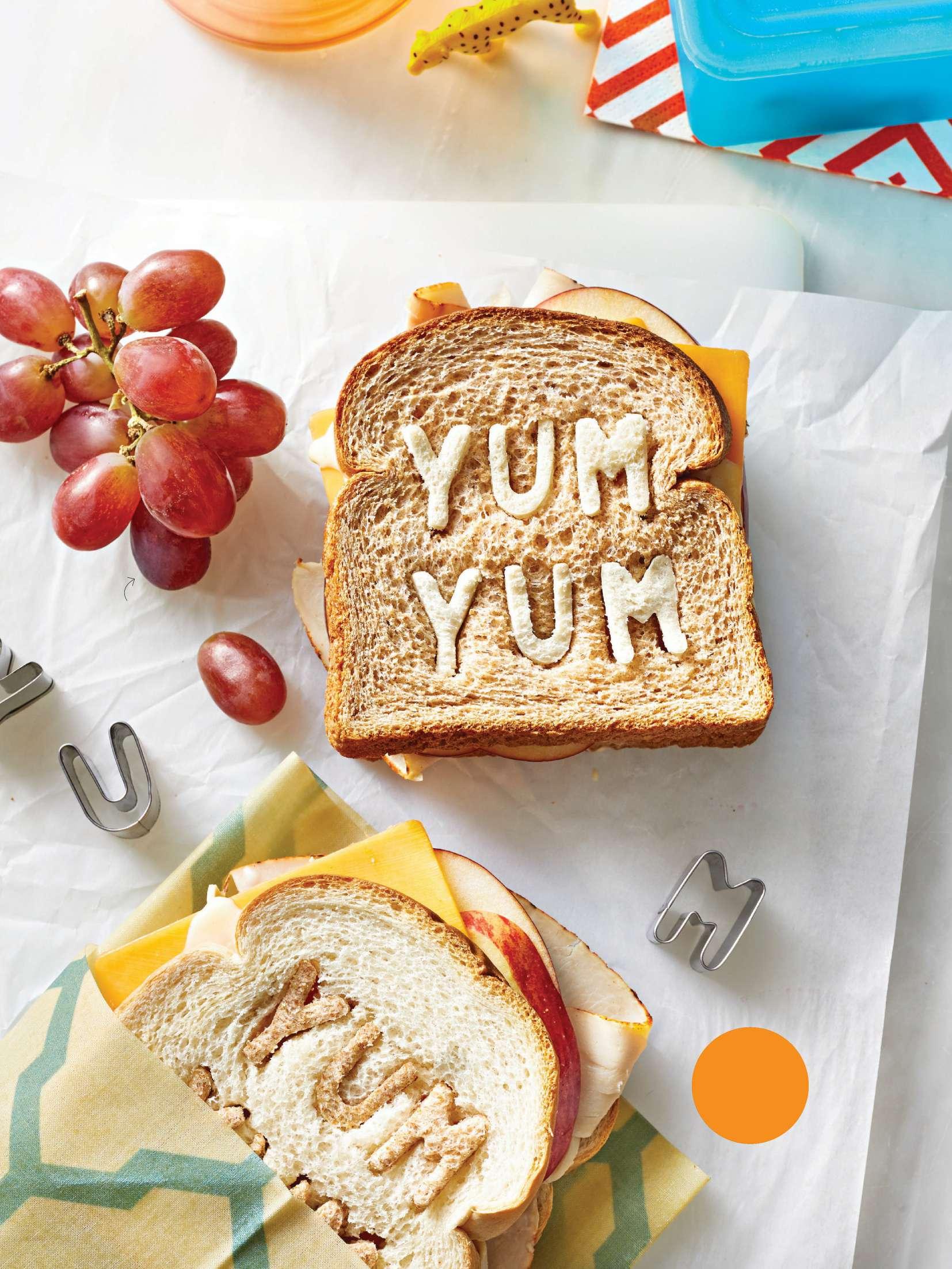
7 minute read
Bread Winners
More Than Just Pick y
Not all kids will grow out of their selective eating. Experts in feeding therapy explain how to know if your child may need extra support.
Advertisement
L O O K F O R S I G N S
We all have foods we’d rather not eat, and that is especially true (and normal) for toddlers as they test their newfound independence. “Most toddlers like something one day, then might refuse it for days or even weeks,” says Kimberly Korth, an occupational therapist and feeding program coordinator at Children’s Hospital Colorado, in Aurora. “But it eventually comes back to their repertoire when you try again.” What you don’t want is for them to be overly regimented, says Kelly Komisaruk, a speech pathologist and pediatric feeding specialist in St. Cloud, Florida. Red flags include eating less than 20 foods, eliminating whole food groups or textures, having huge mealtime tantrums, or being very specific about brands, their silverware, or where they eat. By age 3, most kids should grow out of such big behaviors, Komisaruk says. “Instead of having a tantrum, they should be able to say, ‘I don’t like that.’ ” If these habits sound familiar or haven’t subsided, or if meals are overly stressful, it’s a good idea to talk to your pediatrician. As with most issues, getting help sooner is better, but Komisaruk reminds parents that it is never too late. If your extremely picky toddler is now an extremely picky teen, there is help for them too.
K N O W T H E C A U S E
Kids past toddler age usually have a reason for their extreme food selectivity, Korth says. They may have developmental delays, difficulty chewing or swallowing, or sensory sensitivities. “Or maybe they got sick,” Komisaruk says. “I see kids who had a stomach flu and have trouble eating after that.” A child may also have an allergy or a gastrointestinal problem, either of which can teach them to associate pain with eating.
U N D E R S T A N D T R E A T M E N T
Feeding therapy can involve speech pathologists, dietitians, occupational therapists, and developmental pediatricians. For most, the process shouldn’t be too long. “I would give it six months to start initial goals, but it shouldn’t take three years,” Komisaruk says. Sessions often focus on exposing a kid to new foods, working through sensory sensitivities, and making eating fun for the whole family. “I always tell parents their child may not become the most adventurous eater, but therapy will bring them to a point where life and meals aren’t so stressful,” Komisaruk says.
A Quick Meditation for Daily Life
Think your kids won’t like meditating? That might be true if you’re picturing a crisscross applesauce “om” moment, but sensory meditation is an easy technique that throws the usual “rules” out the window. First, have them focus on one thing they can taste. Guide them along, asking questions such as, “Can you still taste breakfast?” They can silently ponder or answer aloud. If the conversation gets off track, gently prompt them to think of two things they can smell, then three things they can hear, four things they can feel (let them grab items if they want), and five things they can see (yup, open eyes are allowed). Even one minute per sense will help ground them in the present. “You don’t have to wait for moments of calm or distress,” says Emily Pardy, a family therapist in Nashville who does sensory meditation with her four kids on their drive to school. “You can do this while fixing breakfast, and it is just like a pause button.”
Sore-Throat Savers
Pediatricians share tips for providing relief all day long.
In the morning If your child wakes up and says their throat hurts, assess the symptoms, says Heather Felton, M.D., a pediatrician and Parents AAP panel member. A sore throat with a headache or stomach pain could be strep throat; congestion and a cough could be a virus, including a cold or COVID-19. Throat pain can come from sinus drainage after lying down, so your child may feel discomfort early on. It can help to give acetaminophen or ibuprofen in the morning, says Antwon Chavis, M.D., a Parents advisor and assistant professor of pediatrics at Oregon Health & Science University.
During the day “Kids won’t eat quite as well when sick, but the bigger risk is dehydration,” Dr. Chavis says. “Prioritize giving them any fluids they like.” Warm caffeine-free tea can provide extra relief. On the cooler side, ice pops can comfort and hydrate. Dr. Felton also recommends a spoonful of honey for kids over age 1. Gargling with salt water or sucking on lozenges for kids who are old enough to not swallow either may also help. Just remember to steer clear of lozenges that numb and opt for those that soothe.
Before bed It’s best not to give your child sleep-inducing medicine, Dr. Felton says. Instead, return to acetaminophen and honey. Honey will coat and protect your child’s throat from added irritation as they lie down. While you’re thinking about postnasal irritation, prop their head up with an extra pillow to minimize that drip. Steam from a humidifier can also help them sleep through the night, Dr. Chavis says.
B R E A D W I N N E R S
Keep lunch fresh for the kids (and yourself).
recipes by H E AT H E R S TA L L E R / photographs by C A I T L I N B E N S E L
Remember to slice grapes if serving to kids age 4 or under.

Each lunch serves two, one for you and one for your kid.
Message in a Sandwich
Arrange 2 slices white bread and 2 slices whole- wheat bread on a cutting board. Use small letter cookie cutters to cut the words yum yum (or other message) out of 1 slice of each type of bread. Insert white-bread letters into the wheat-bread cutouts, and the reverse, as shown. Mix 1 Tbs. mayonnaise, ½ tsp. Dijon mustard, and ½ tsp. honey in a small bowl. Spread onto remaining 2 bread slices. Top each with 2 slices roast turkey deli meat, thin apple slices, 1 slice cheddar cheese, and more honey mustard. Place the bread slices with the message on top.

Ham & Cheese Skewers
Cut 1 slice whole-grain or white toast into twelve 1-in. squares. Cube 1 small cooked chicken breast (about 4 oz.) and 2 oz. Swiss cheese. Cut 2 slices deli ham into strips. Thread all ingredients plus small dill pickles onto six small skewers, as shown.
Sunny Day Bagels
Slice and toast 2 mini bagels. Mash 1 hard-boiled egg with 1 tsp. mayonnaise and a pinch of salt and pepper in a small bowl. Cut 2 slices yellow American cheese into round sun shapes with zigzag edges or in triangles. Divide egg salad between the bottom halves of the bagels, then place the cheese so it resembles the rays of a sun. Top with the remaining bagel halves and press down.
For added flavorful oomph and greenery, stir 1 Tbs. pesto into the hummus.
Maple–Cream Cheese Mini Pancakes

Microwave 16 frozen mini pancakes on the defrost setting for 30 seconds, until they’re just warm. Mix 1/3 cup whipped cream cheese (or softened regular cream cheese) with 2 tsp. maple syrup and a pinch of ground cinnamon in a small bowl. Spread cream cheese on half the pancakes, then top with remaining pancakes.
Veggie Monsters
Spread 4 slices whole-grain toast with 1/4 cup hummus. Top 2 pieces of toast with sliced cucumber, grated carrot, and red bell pepper slices. Cover with remaining toast. Cut a zigzag pattern through the center, as shown. Make a monster face using mini cucumber slices for eyes, blueberries for pupils, and red bell pepper for eyebrows, using hummus to hold them in place.
Bean & Cheese Pockets
Place ½ cup drained and rinsed canned black beans in a small bowl. Add 2 Tbs. salsa and a pinch of salt. Mash beans and salsa with a fork. Use a 31/4-in. cookie cutter or the rim of a glass to cut large circles from 6 slices whole-wheat bread. Divide bean mixture among centers of each bread circle, then sprinkle each with about 1 tsp. shredded Mexican-blend cheese. Fold circles in half, pinching the edges together. Press tines of a fork around the edges to seal.










